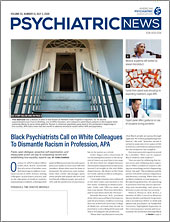The values of a community are reflected in individuals’ willingness to secure well-being and vitality for all. I envision a day when preventable death, disabilities, and health disparities are eliminated. This transformation will occur only by examining the causes of health inequities and social determinants of health and directing more interventions to collaborate in health promotion and disease prevention.
The socioeconomic status of Hispanics in the United States is considerably lower than that of non-Hispanic whites due to several specific characteristics of the Hispanic population, including their lower family income, more limited educational attainment, and lower-paying occupations.
Hispanics are more likely to work in agriculture, construction, domestic and food services, and other low-wage occupations with inadequate health insurance coverage. Limited formal education may impair people’s ability to navigate the complex health care delivery system. Additionally, Hispanics are more likely to live in impoverished communities, in close living conditions, and cities with less-developed trash and sewer infrastructures. Most foreign-born Hispanics and Puerto Ricans primarily speak Spanish, and most of the health-related instructions and materials are in English, so non-English speakers don’t have access to them.
Despite the disparities in employment, education, and income, Hispanics have lower age-adjusted mortality rates than African Americans and, in many cases, lower rates than non-Hispanic whites. One possible explanation is the social support and traditional values of the families and community as they tend to stay together.
This action makes it hard for communities with extended families who highly value family contact to get through difficult situations when asked to stay away from each other because of the pandemic. A loss of cultural values in family members who are U.S. born or assimilated to the culture can lead to intergenerational stress that undermines family relationships and lowers expectations about academic performance, mental health, and well-being.
These socioeconomic differences of Hispanic communities continue to be valid during the COVID-19 pandemic. Of course, all human beings have a right to know when and how to seek care. But data continue to show that African Americans and Hispanic people are dying from COVID-19 at higher rates than whites, even though they make up a smaller percentage of the population.
This situation is similar to the Spanish flu in 1918, cholera pandemic of 1961 to 1975, and the H1N1 swine flu outbreak in 2009. People with limited ability to communicate because of language differences and limited social and economic options do not receive adequate health information and services, which ultimately exacerbates health disparities. We must learn from our past mistakes.
Closing places of trust for our communities like churches, barbershops, and community parks has left a gap in communication channels in minority neighborhoods across the country. Without culturally relevant communication strategies, many cities were lost.
The Centers for Medicare and Medicaid Services and other federal and state regulatory bodies waived specific requirements for telecommunications, which has allowed many Americans to continue to get health care services. While based on my colleagues’ and my experiences during the pandemic, telehealth is not the optimal solution for every patient, these changes are important to not only ensure but also increase access to care. In addition to physicians and nurses, other health care professionals, including psychologists and social workers, can provide telehealth services. I have been practicing telemedicine for more than four years, and this is the first time I have seen such policy changes. Telehealth has been promoted as an innovative approach to bridging the health care delivery gap by increasing access to services for medically underserved communities for decades.
Unfortunately, it was not until the pandemic affected both white and non-white communities that we saw a loosening of the rules. That loosening increased access to resources that could have been the salvation, for so long, of socioeconomic revitalization, connectivity, and technology infrastructure development to address health equity for underserved communities. The same effect was seen when the life expectancy of the U.S. white population declined mainly due to the opioid epidemic. Specific treatment options were marketed primarily to suburban communities, whose residents can pay for treatment.
The spread of telehealth services during the pandemic and increased medication access for assisted treatment during the opioid epidemic have a lot in common. They illustrate how racially different health policies and health care practices make those vulnerable even more vulnerable in the face of inadequate attention to public health.
Case Examples of Impact of Pandemic on Hispanic Community
Let’s take the experiences of some of my patients. I am using pseudonyms for both of the cases discussed to protect the patients’ identities.
Gilberto was doing well; his diabetes and opioid use disorder were well controlled. He was working and taking care of his family. After the pandemic hit, the restaurant where he was working was forced to close. He did not have health benefits or accumulated days off, so his boss let him go. He started eating junk food, which affected his sugar control. Poor glycemic control is a risk factor for severe infections, and adverse outcomes of infection with COVID-19 and other diseases, including bacterial pneumonia, are more likely without reasonable glycemic control.
Gilberto was admitted to the hospital for glycemic control and discharged home to quarantine after testing positive for COVID-19 because he was asymptomatic. His wife called my office after he relapsed on heroin after three years of sobriety on buprenorphine. Gilberto then told me that he was ashamed of calling me as he had “failed.”
Stigma and shame associated with mental illness and lack of information reduce the utilization of services. But we know that a fact in recovery culture is that a substance use disorder is a disease of isolation, and, in every possible way, what we are asking people to do during the pandemic is to isolate.
For people struggling with a substance use disorder and chronic illness, virtually all of the services and treatments available to them have been disrupted by the COVID-19 epidemic. People are told to stay home, which directly contradicts the need to go to clinics to obtain services. Without in-person meetings, remaining sober is difficult for some individuals, and it is difficult for our communities to call for help.
Unfortunately, there are countless stories of patients struggling with similar situations. Having clinics provide their services over the phone presupposes that there are physicians who are healthy and certified to prescribe every medication and that the pharmacies and doctors’ offices are functioning. Additionally, rehabilitation facilities have limited new admissions, canceled programs, or even shuttered their doors for fear of spreading the virus.
Another patient was Marla, an undocumented Guatemalan woman who worked in a pizzeria “under the table.” She never stopped reporting to her job, even after she began coughing and feeling ill. Her condition quickly deteriorated. She was admitted for treatment and discharged two weeks later. However, her mother became sick while Marla was in the hospital. After her mother began gasping for air, Marla’s husband rushed her to the hospital. Marla and her mother could not see each other due to COVID restrictions, and her mother died from COVID-19. Marla feels guilty about what happened, saying that finding support and accepting loss of her mother have been hard without seeing her psychotherapist and me, her psychiatrist, in person.
We need to make extra efforts to maintain social bonds during this time of enormous stress and social isolation. Healthy social conditions can ensure that the most vulnerable members of society benefit from the same fundamental rights and opportunities as more affluent citizens. We need to ensure that all residents have equal access to quality health care and essential community services that preserve and protect health.
How to Strive to Understand the Social Determinants of Health
For providers, the complexity of social health determinants paired with the medical field’s challenges and organizational priorities make it hard to know where to start focusing, but determining the “who,” how,” “where,” and “what” of the underlying factors impacting minority communities is critical. Food security, jobs, education, and quality of housing are four determinants of a secure link to health and are common areas of focus for health care organizations.
Understanding market-specific population issues should lead our health systems and private practices to focus on increased access to behavioral health services and virtual telehealth offerings as part of overall growth strategies. Shifting individuals’ and organizations’ mindset around can better inform the way we create services aligned to health equity and the communities’ preferences and needs.
Social Determinants of Health Go Beyond Racism and Colorism
The coronavirus is not a racist disease. It has no eyes, and its only goal in life is to replicate inside the living cells of an organism. There are no biological reasons why Black and Hispanic people should be getting sick with and dying of coronavirus more than white people. Skin color continues to serve as the most apparent criterion in determining how a person will be assessed and treated in our country. The racial categories in the United States for our phenotypically ambiguous population are limited. According to the U.S. Census, you are white, Black, American Indian/Alaska Native, Asian, Native Hawaiian/other Pacific islander, or multiracial. The privileging of light skin over dark affects where you live, what you eat, where you work, and other environmental factors.
What Can We Do?
•
Improve education and leadership programs in the workforce: Without a doubt, the future workforce will have an increasingly Hispanic identity. We need to improve the access of Hispanics to education and eradicate the root causes for the shortage of Hispanics’ advancement into leadership. Less than 5% of corporate leaders and physicians are Hispanics. For one, there is still outright prejudice and bias in the workplace. A fair and equitable work environment creates a competitive system. Those who do well get promoted, and issues of race, ethnicity, and gender do not matter because merit is all about performance. For the most part, Hispanic individuals have been closed out of the health professions, and supporting them would create a pool of potential health care workers in the United States.
•
Create flexible and culturally competent policies and payments: Culturally specific guidelines for mental and substance use disorder treatment programs must be created so that Black and Hispanic people can access treatment and get high-quality care.
•
Tailor communication channels: Public health information changes rapidly, and timely guidance to minority communities is critical. Public health concepts are not readily understandable across cultures. Concepts such as social distancing, flattening the curve, self-quarantining, wearing face masks, and washing hands should be explained in a culturally appropriate manner. The dissemination of news and information through mainstream and social media should also be done in a culturally appropriate manner.
•
Partner with communities, nonprofits, and community leaders: Community leaders are trusted messengers and influencers to their communities. They know their community’s needs. They often have diverse partnerships and collaborations with schools, local businesses, law enforcement, and medical personnel. Mental health professionals are critical for outreach, engagement, and linking Blacks and Latinos with mental and substance use disorders to treatment. As medical professionals, we should promote and educate patients about lifestyle factors associated with disparities, including preventive care; dietary behavior; physical activity; use of tobacco, alcohol, and other substances; and sexual practices. Screening and treatment are particularly crucial for the control and prevention of many conditions. Knowing where to find treatment facilities with cultural competence and resources for Hispanics is essential to obtain preventive care and treatment and avoid the progression of disease and worse outcomes, including death.
•
Collect and release data to improve resources to improve health disparities: All states and municipalities need to collect and release the demographic data on who is being affected with coronavirus in both the Hispanic and Black communities. The more we understand about the virus, the better equipped we will be to determine the resources and funding needed in these communities. The COVID-19 pandemic has common ground with the Black Lives Matter movement. These bring opportunities for our country to make investments that will help revive our national potential for productivity by promoting the health of minority communities and targeting disparities in population health. An increased focus on chronic disease prevention and control programs that engage Latino communities in addressing environmental, policy, and behavioral changes is needed.
•
Supporting our international medical graduates (IMGs) colleagues: Join advocacy efforts and groups supporting non-U.S. citizen international medical graduates (IMGs) who are practicing or otherwise lawfully present in the country. Given workforce demands during and probably after the pandemic, there is an urgent need to take these opportunities for fast-tracking immigrant and bilingual people into the health care force, especially in areas of the country with higher rates of poverty and chronic disease such as minority communities.
The trends in health disparities are demographic and based on socioeconomic inequalities that create high-risk conditions for Hispanic communities. We can reduce health disparities by addressing inequalities, but we need to deliberately change our focus from thinking only of white-type patterns of health care needs and use. Such thinking ignores other groups who may have different needs. The change is possible only if the efforts of federal, private, and state health agencies are coordinated and include benchmarks to hold them accountable and ensure that Hispanic individuals are getting the care they need. If we do fail to achieve equality in the health care system and law enforcement, we will continue to leave Hispanic communities and others vulnerable in the face of harmful social determinants of health. ■
Resources
APA offers a number of resources on working with Latino/a and Hispanic patients on its website:
APA members interested in joining the Caucus of Hispanic Psychiatrists should go
here and click on “Join” on the right side of the webpage.


